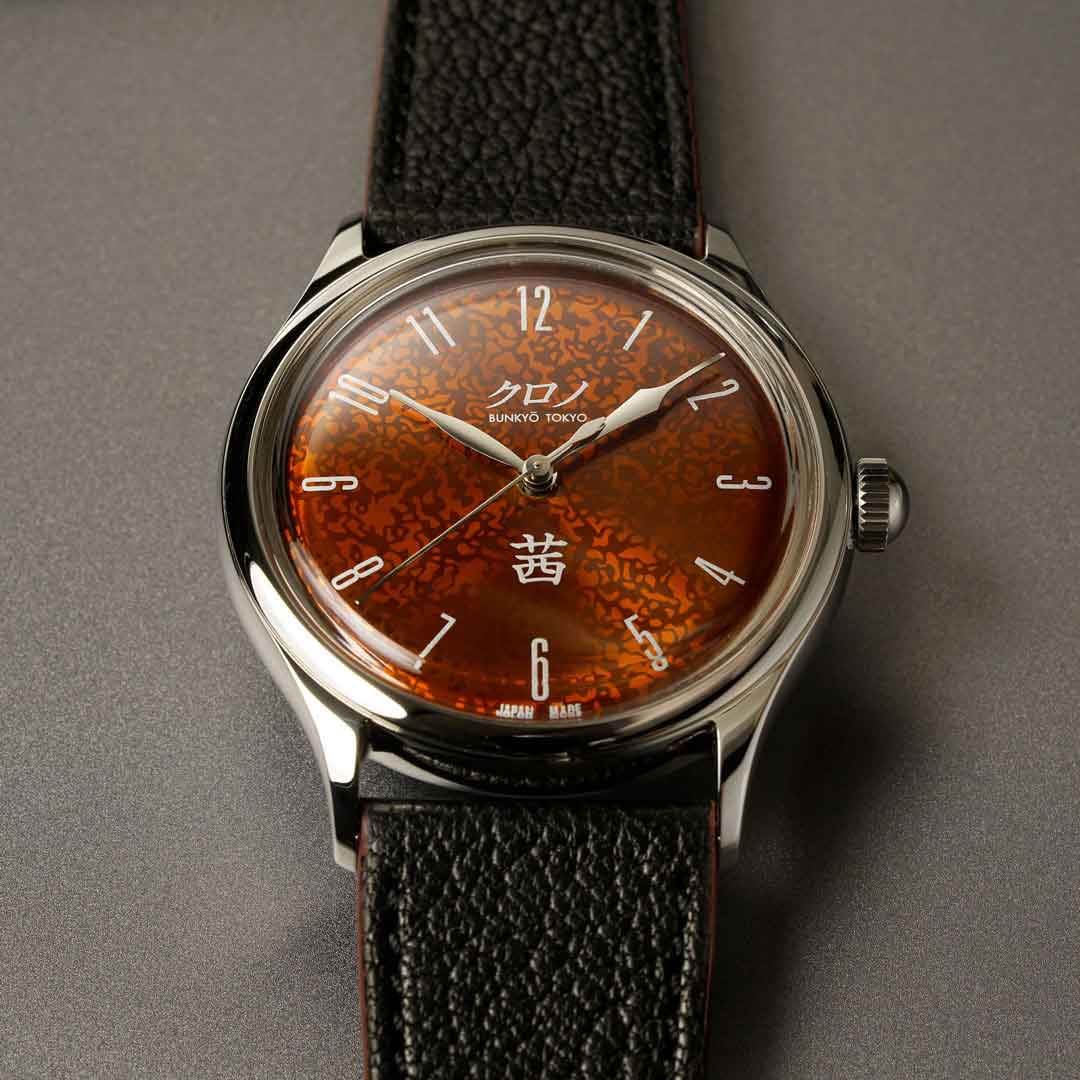
GRAND AKANE : '茜'
Kurono’s first artisan-level timepiece, the Grand:Akane ‘茜’ in November 2020, features a uniquely made urushi dial by a master craftsman, showcasing contrasting red hues that develop different color shades over time according to the usage of the owner. The dial features a ‘Hamon (刃文)’ design that is finished with the traditional Japanese ‘Niiro 煮色’ chemical treatment and further sealed by an additional layer of suki-urushi (transparent lacquer). The design is finished with arabic numerals in silver, and the character "茜" at the 6 o'clock position alludes to the color of the dial based on the image of a daruma sunset. The Grand:Akane features a special, never seen before caseback that is significant only to the 'Grand' line of watches - Hajime Asaoka's calligraphic signature, flanked by his hanko impression and the Kurono logo.


Hamon Design
Hamon (刃文), meaning 'blade pattern', is a visual effect created by the hardening process typically done on blades. The pattern mimics that of a mountainous terrain with peaks and dips, and historically deemed as evidence of the maker’s effort to produce the finest work. In the case of the Grand:Akane, the Hamon visual effect is repeated throughout the dial giving it an ethereal contrast of lighter and darker red.

Urushi & Suki Urushi
Urushi lacquer is made from the filtered sap of the Japanese rhus vernicifera tree. It is seen as a miraculous substance that cures naturally into a material with remarkable properties. The lacquer absorbs moisture from the air as it hardens, making the lacquered surface perpetually shiny and slick. Over time, urushi will become harder and more scratch-resistant as the curing process continues even after the initial manufacture. Suki-Urushi (or clear lacquer) seals the Hamon pattern on the Grand:Akane dial. Sunlight - specifically UV light - will, over time, lighten and make it more translucent and warmer or cooler.

Niiro Method
Niiro (煮色) quite literally translates to the boiling of color. It is a historically distinct patination technique, exclusive to Japan, responsible for the coloration of copper and its alloys into irogane metals. A highly guarded craft, niiro has existed for at least 600 years, but its history may extend over 1200 years.
The process comprises heating the metal in a special liquid or solution. The piece must first be immaculate to ensure the quality and predictability of the end product. Ultimately, the final color depends on the duration of the boiling. After this patination process, it is washed in cold water before being coated with suki-urushi.
Specifications & Availability
Japan-made mechanical automatic movement
Sapphire glass
Kanji embellished caseback
28,800 vibrations / hour, power reserve 40 hours
Waterproof to 3 ATM
316L high-polished 37mm stainless steel case
Special black calf leather band with red sides
20mm at lugs, 16mm at buckle
Made in Japan
Expected delivery in March 2021 (Starting from Public Tier)
Total edition size of 200 pieces
Delivery: March 2021 from Public Tier
SOLD OUT
Media Downloads